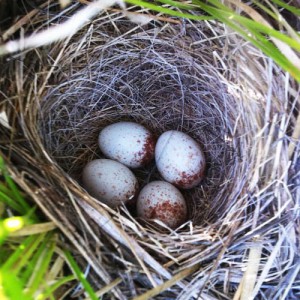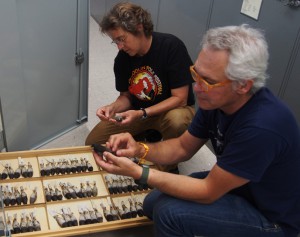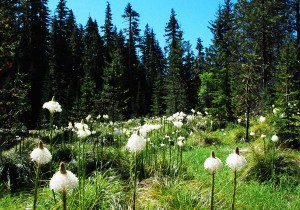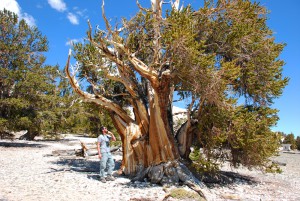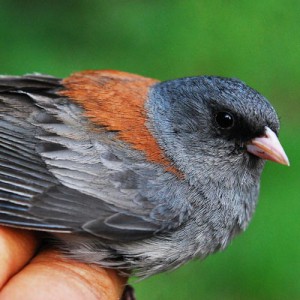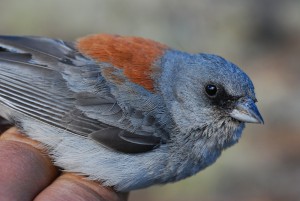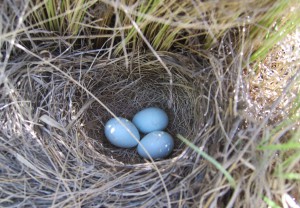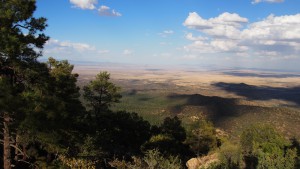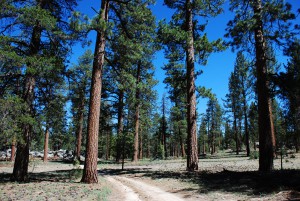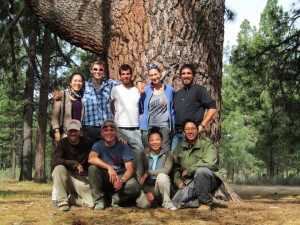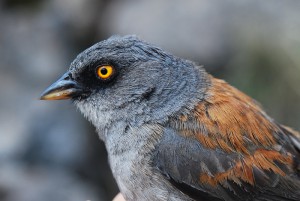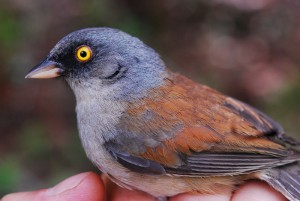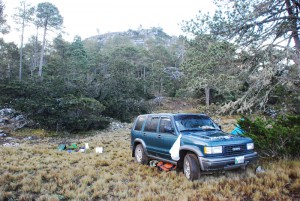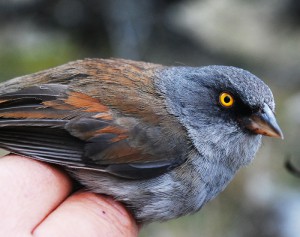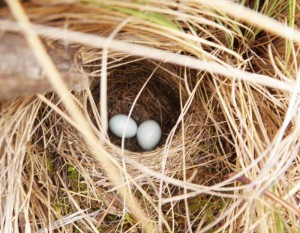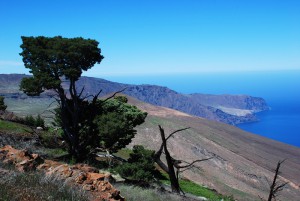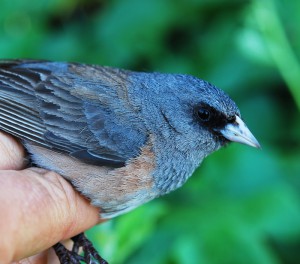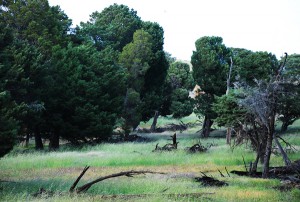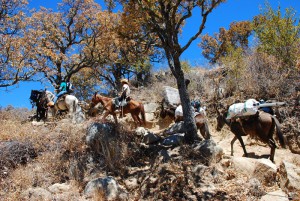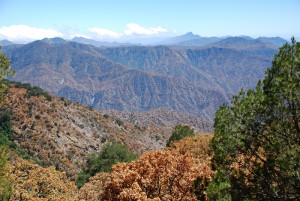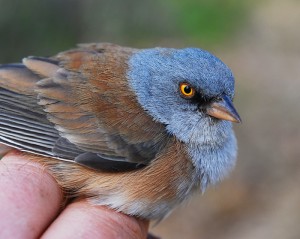We use molecular genetic tools and patterns of phenotypic variation to reconstruct the evolutionary history of the songbird genus Junco in order to understand the factors, mechanisms and timing of their diversification across North and Central America. Analysis of mtDNA sequence and AFLPs revealed that plumage diversity in the dark-eyed junco, which has puzzled ornithologists for over a century, evolved recently as the yellow-eyed junco colonized the North American continent from southern Mexico following the Last Glacial Maximum. We have sampled juncos all over their distribution, from remote localities in the highlands of Guatemala, the tip of Baja California, or Guadalupe Island in the Mexican Pacific, to mountains across Mexico and United States. Currently the genus Junco is composed of four taxonomic species (see figure below): the dark-eyed junco (Junco hyemalis) which includes several plumage forms (caniceps, dorsalis, oreganus, mearnsi, etc.), the yellow-eyed junco (Junco phaeonotus) which also includes several distinct forms (palliatus, bairdi, fulvescens, alticola), the Guadalupe junco (Junco insularis) recently raised to species level by the A.O.U. thanks to our work (see publication by Aleixandre et al. 2012 below), and the volcano junco (Junco vulcani), a more distant relative that inhabits the volcanos of Costa Rica.
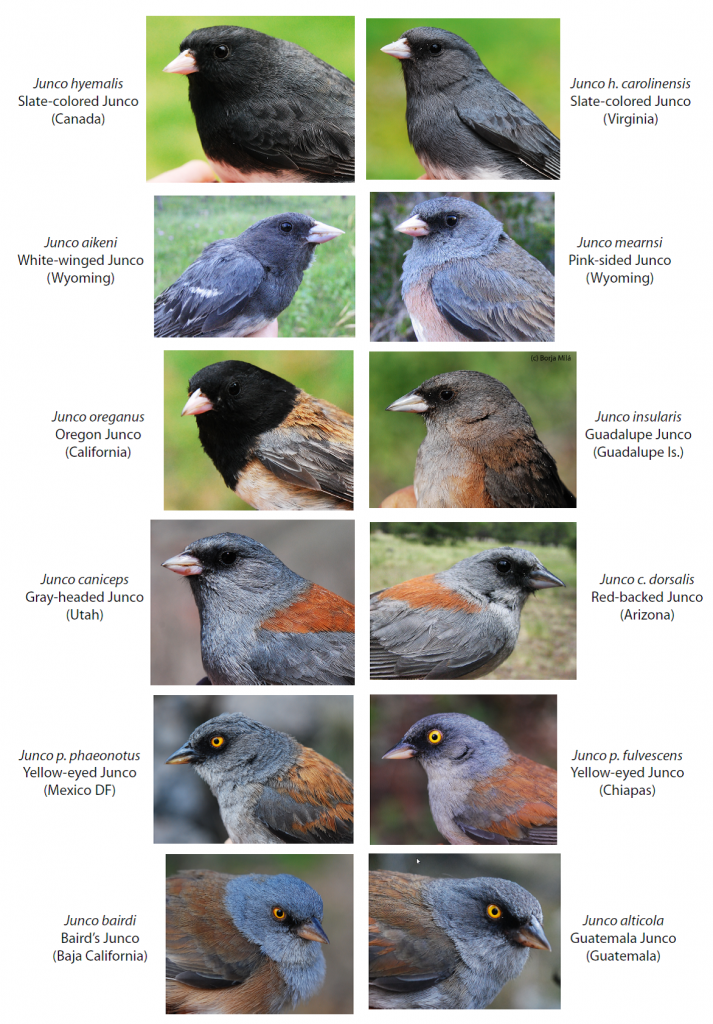
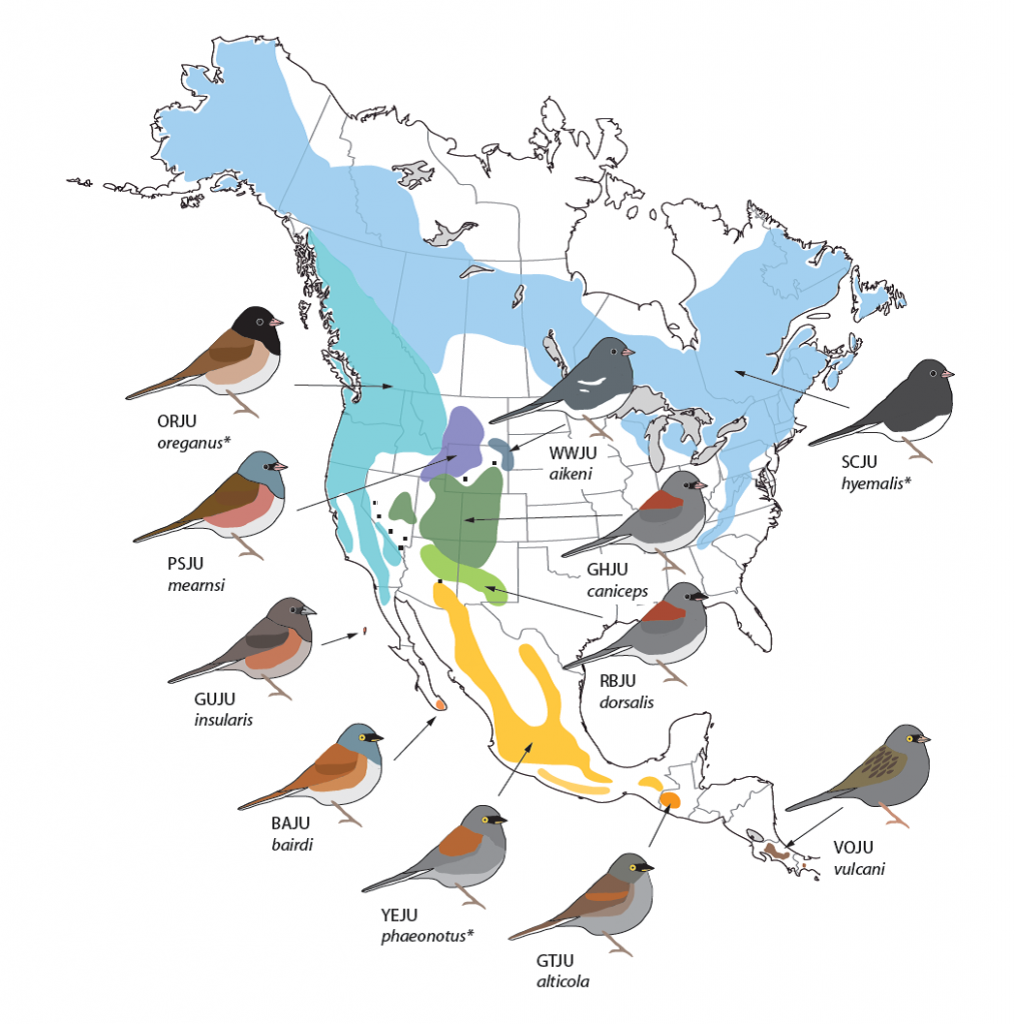
A new analysis of all known junco forms using a multilocus dataset reveals that junco populations at the tip of Baja California, Guadalupe Island in the Pacific, and the highlands of Guatemala, represent divergent lineages that have been isolated for hundreds of thousands of years, yet have differentiated relatively little in most traits. A phylogeny of the group reveals that the yellow-eyed and dark-eyed juncos do not represent monophyletic groups. The Guadalupe junco is an old evolutionary lineage whose similarity to mainland dark-eyed juncos in plumage and eye color is due to convergence. Some phenotypic traits (eye and several plumage color traits) are not phylogenetically informative in juncos, whereas bill color or song characters are more consistent with neutral genetic markers. Drift or mutation-order divergence in long-term geographic isolation likely explains the differentiation of Guatemala and Baja juncos. In contrast, a role for sexual selection must be invoked to explain the rapid diversification of continental dark-eyed junco taxa.
We are now using next-generation sequencing (NGS) markers to further clarify phylogenetic relationships among incipient lineages, quantify gene flow and introgression among forms, and detect specific regions of the genome under selection. We are also using transcriptomics (RNA seq) in collaboration with Ellen Ketterson (Indiana University, USA) and Paolo Ribeca (CNAG, Barcelona) to understand the genetic basis of melanic plumage color in juncos and study the role of sexual selection in lineage divergence.
Our collaborators Jonathan Atwell and Ellen Ketterson at Indiana University have put together an excellent set of videos for the general public on what juncos and our research project can teach us about evolution: www.juncoprojec
Related publications:
Friis, G, J. W. Atwell, A. M. Fudickar, T. J. Greives, P. J. Yeh, T. D. Price, E. D. Ketterson, B. Milá. 2022. Rapid evolutionary divergence of a songbird population following recent colonization of an urban area. Molecular Ecology, 31(9): 2625-2643.
Friis, G., J. Vizueta, E. Ketterson, B. Milá. 2022. A high-quality genome assembly and annotation of the dark-eyed junco Junco hyemalis, a recently diversified songbird. G3: Genes, Genomes, Genetics, 12(6):jkac083. PDF
Martínez-Renau, E., N. Rojas-Estévez, G. Friis, J. C. Hernández-Montoya, P. Elizondo, B. Milá. 2022. Haemosporidian parasite diversity and prevalence in the songbird genus Junco across Central and North America. Ornithology, 139:1-17. PDF
Friis, G. and B. Milá. 2020. Change in sexual signaling traits outruns morphological divergence in a recent avian radiation across an ecological gradient. Journal of Evolutionary Biology, 33(9): 1276-1293.
Friis, G., G. Fandos, A. Zellmer, J. McCormack, B. Faircloth, B. Milá. 2018. Genome-wide signals of drift and local adaptation during rapid lineage divergence in a songbird. Molecular Ecology, 27:5137-5153.
Abolins-Abols, M., E. Kornobis, P. Ribeca, K. Wakamatsu, M. P Peterson, E. Ketterson, B. Milá. 2018. A role for differential gene regulation in the rapid diversification of melanic plumage coloration in the dark-eyed junco (Junco hyemalis). Molecular Ecology, 27:4501-4515.
Friis, G., P. Aleixandre, R. Rodríguez-Estrella, A. Navarro-Sigüenza, B. Milá. 2016. Rapid postglacial diversification and long-term stasis within the songbird genus Junco: phylogeographic and phylogenomic evidence. Molecular Ecology, 25: 6175–6195.
Milá, B., P. Aleixandre, S. Alvarez and John McCormack. 2016. “More than meets the eye: lineage diversity and evolutionary history of dark-eyed and yellow-eyed juncos.” In Snowbird: Integrative biology and evolutionary diversity in the junco. Ellen D. Ketterson and Jonathan W. Atwell (Editors), Chicago University Press, Chicago.
Aleixandre, P., J. Hérnandez-Montoya, B. Milá. 2013. Speciation on oceanic islands: rapid adaptive divergence vs. cryptic speciation in a Guadalupe Island songbird (Aves: Junco). PLOS ONE, 8(5): e63242.
Milá, B., J. E. McCormack, G. Castañeda, R. K. Wayne and T. B. Smith. 2007. Recent postglacial range expansion drives the rapid diversification of a songbird lineage in the genus Junco. Proceedings of the Royal Society B: Biological Sciences, 274:2653-2660.

